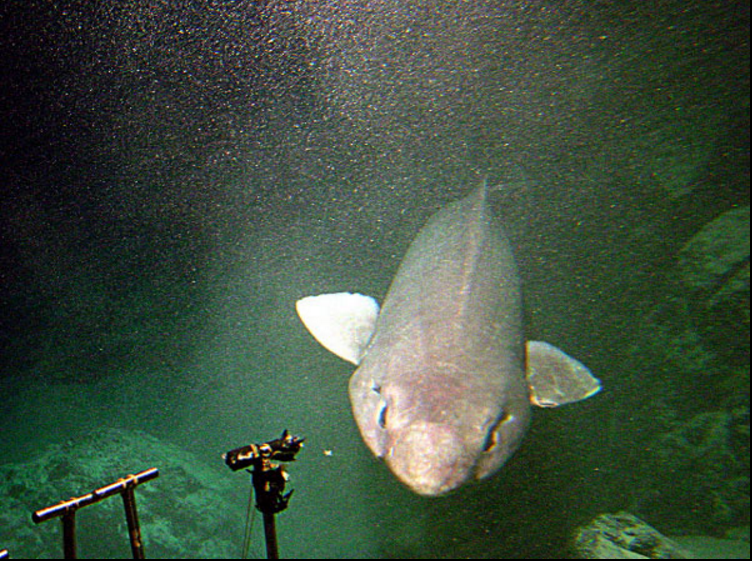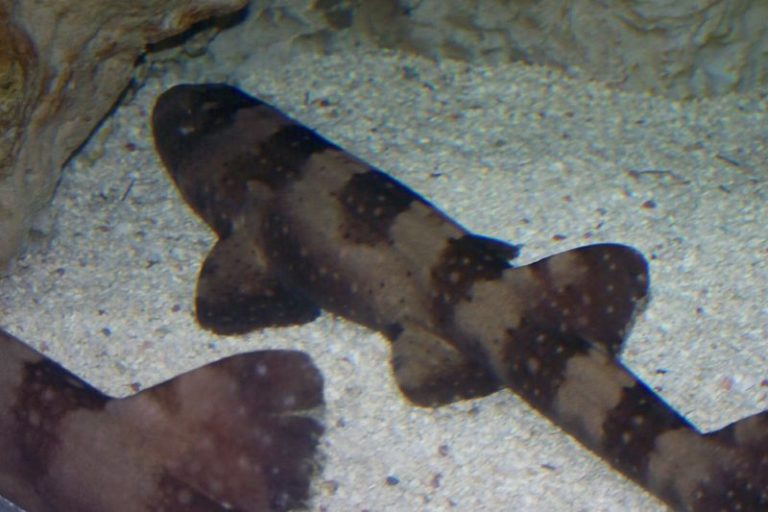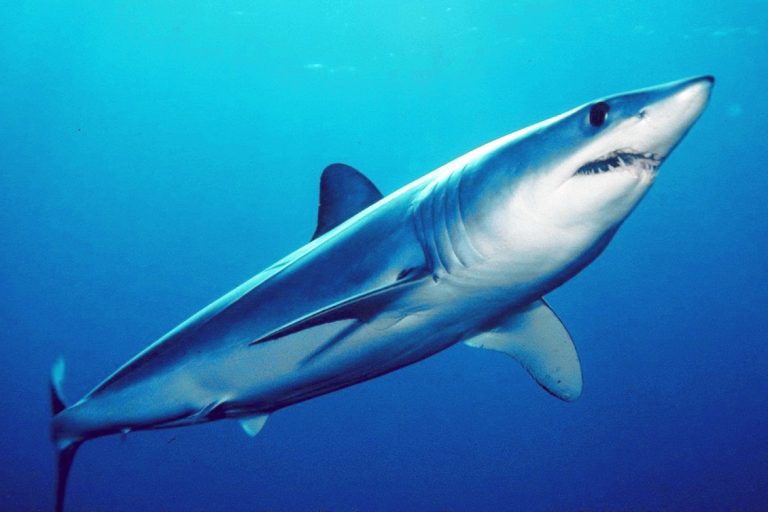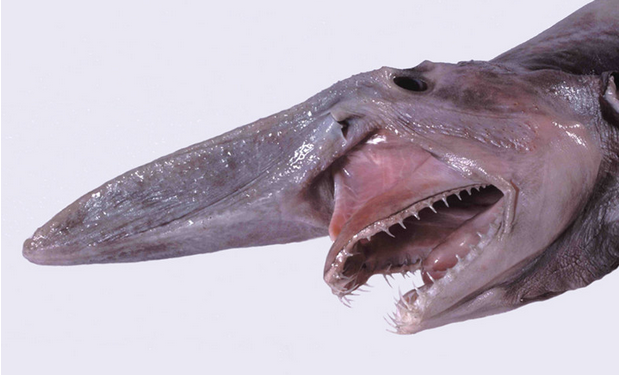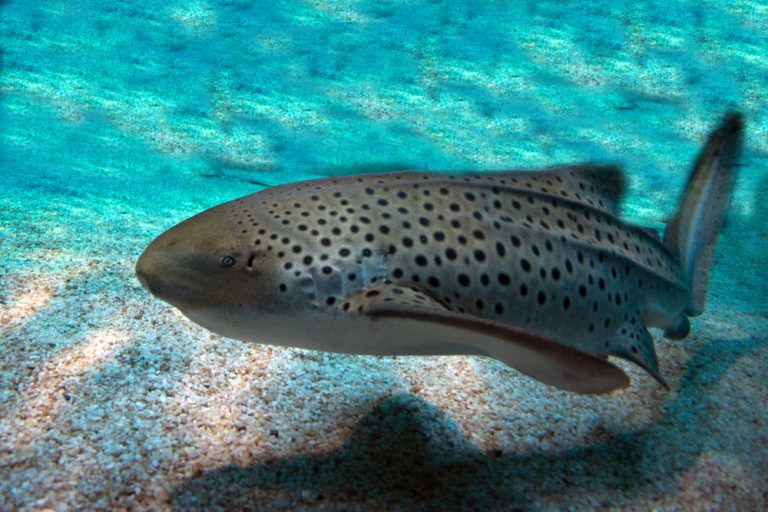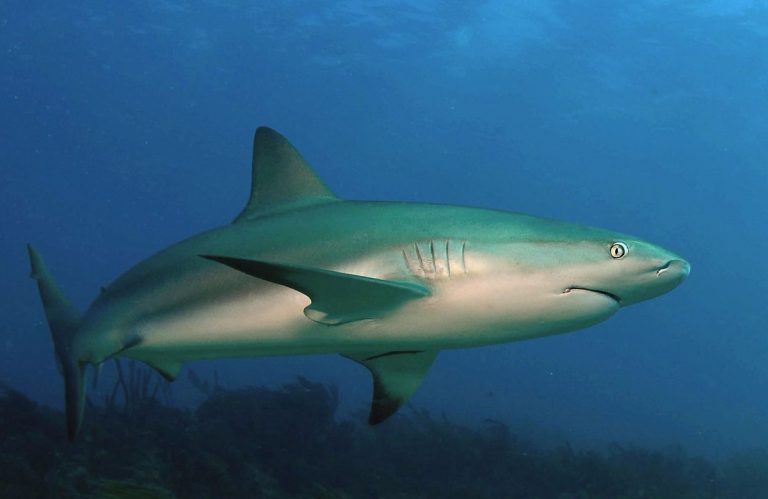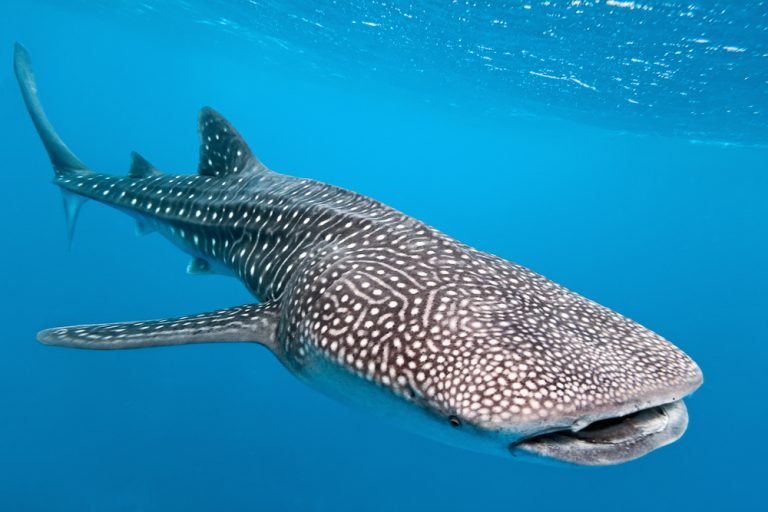Species Profile: The False Catshark
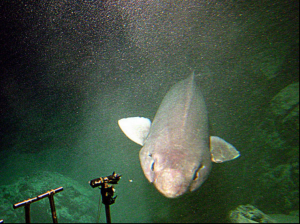
The false catshark, or sofa shark, belongs to the family Pseudotriakidae and it is the sole member in its genus. Interestingly, many shark species in this same family are also referred to as dogfish.
It has a stocky, heavy build, and dark brown or light gray body color. Its first dorsal fin is easily distinguishable due to its elongated keel-like appearance. The name ‘false catshark’ was given to it because even though it has long, narrow cat-like eyes, it’s not a proper catshark. The false catshark has a large and wide mouth filled with many tiny teeth. As a result of its wide gape, it appears like it’s smiling.
This shark is known for its sluggish movement, flabby muscles and large oily liver. It’s a scavenger and slow-moving predator that feeds on a variety of fish and invertebrates.
1) Scientific Name
Pseudotriakis microdon
2) Scientific classification:
- Kingdom: Animalia
- Phylum: Chordata
- Class: Chondrichthyes
- Order: Carcharhiniformes
- Family: Pseudotriakidae
- Genus: Pseudotriakis
3) Life Expectancy
As with most shark species, between 20 and 35 years.
4) Average/Maximum Length
The false catshark can grow up to 3.0 meters (9.8 feet) long at adulthood.
5) Average/Maximum Weight
The maximum recorded weight for grown false catsharks is 125 kg (276 lbs.).
6) Maximum swimming speed
Its soft fins, flabby musculature and skin strongly suggests that it lives a sluggish lifestyle. Though, it can capture prey with sudden and quick bursts of speed when required.
The false catshark has an extremely large oil-filled liver that makes up almost 25 percent of its total body weight. As a result of this, it can maintain near-neutral buoyancy and hover off the ocean bottom with very little effort.
7) Danger To Humans
The false catshark is not known to attack people.
As regards other human interactions, the false catshark is occasionally caught as bycatch by longlines and bottom trawls. This shark is not a direct target of fisheries per se as it has minimal economic value. Although, the meat, fins, and liver oil are sometimes harvested when it’s caught.
For instance, in Okinawa, Japan its oil has been used traditionally for centuries to water-seal the hulls of wooden fishing boats.
8) Reproduction Details
This shark has viviparous mode of reproduction (unlike other ground sharks), with a litter typically featuring just two pups.
It has an unusual form of oophagy. Adult females have a single ovary, on the right, and two functional uteruses and they produce a large amount of ova. For instance, a female false catshark that was caught and examined was found carrying over 20,000 ova. Though she measured just 2.4 meters (7.9 feet) long.
During the gestation period, the developing embryos are first nourished by egg yolk. Afterwards, the developing embryos consume ova and egg fragments released by their mother. They then ‘store’ the yolk material and use it later to replenish their external yolk sacs. This reserve serves as a post-birth food storage. Although the exact gestation period is unknown, it should be anywhere from one to three years.
Each uterus contains just one pup, though they have been rare instances of four pups in a litter. The newborns measure 1.2 to 1.5 meters (3.9 to 4.9 feet) long. Males are likely to reach sexual maturity at 2.0 to 2.6 meters (6.6 to 8.5 feet), and females at 2.1 to 2.5 meters (6.9 to 8.2 feet) long.
9) Diet/Hunting Pattern Of The False Catshark
Combined with its sudden bursts of speed, its large mouth allows it to consume prey of considerable size. Its preferred diet consists of bony fish like cutthroat eels, and snake mackerel. It will also catch and eat lanternsharks, Heterocarpus shrimp, smaller squids, and octopodes.
This shark is not a picky eater and it will scavenge dead fish and also eat odd items like human refuse, potatoes, plastic bags and floating ocean objects like soft drink cans.
There is evidence that the false catshark is preyed on by the great white shark. One shark was found with considerable bite marks consistent with that of the great white.
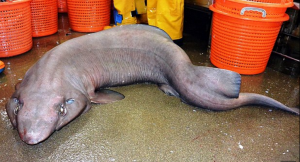
10) Alternative names
- Sofa shark
- Dumb shark (derived from oshizame, its Japanese name)
- Keel-dorsal shark
11) Population And Conservation Status
Since this is a deepwater shark, it is highly susceptible to overfishing because of its low reproductive rate of just two pups per litter. However, it is still rarely caught and there remains little to no information about its population status. Hence, the IUCN has listed it under Least Concern.
12) Ancestry And History
The first person to describe the false catshark was Félix de Brito Capelo, a Portuguese ichthyologist in 1868.
He noticed that a specimen he was studying resembled members of the Trikias genus though with some difference. Hence, the name Pseudotriakis derived from the Greek word pseudo meaning ‘false.’
Its closest relatives are the Gollum sharks as they share many morphological similarities. Though there are a few differences between these two species, their similarities are much closer than other shark species. Also, it appears the false catshark evolved some of its divergent traits just recently.
13) Distribution And Habitat
The false catshark has been sighted worldwide. Accordingly, it has been seen in the Atlantic, Pacific and Indian oceans.
It can be found from North America to South America (from Canada to the USA on to Cuba and Brazil). The waters of France, Iceland, and Portugal then Senegal, the Canary Islands and neighboring islands are also its home.
There are also sightings around Australia, Madagascar, Indonesia, Taiwan, Japan, and New Zealand.
It swims mostly close to the ocean bottom at depths of between 500 to 1,400 meters (1,600 to 4,600 feet). Occasionally, it has been found at 1,900 meters (6,200 feet). In addition, fishermen have seen the false catsharks at seamounts, troughs, and even deepwater reefs.
Some say it looks like a cat, others say it looks like a discarded old sofa. Hence the name ‘sofa shark.’ Even the Japanese call it the dumb shark!
However, we know for sure that there’s nothing discarded or dumb about this shark species that always looks like it’s smiling.

